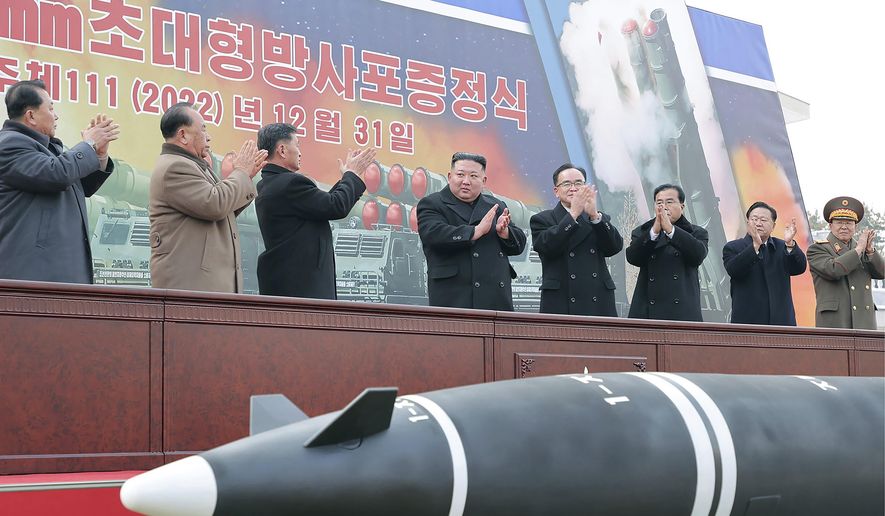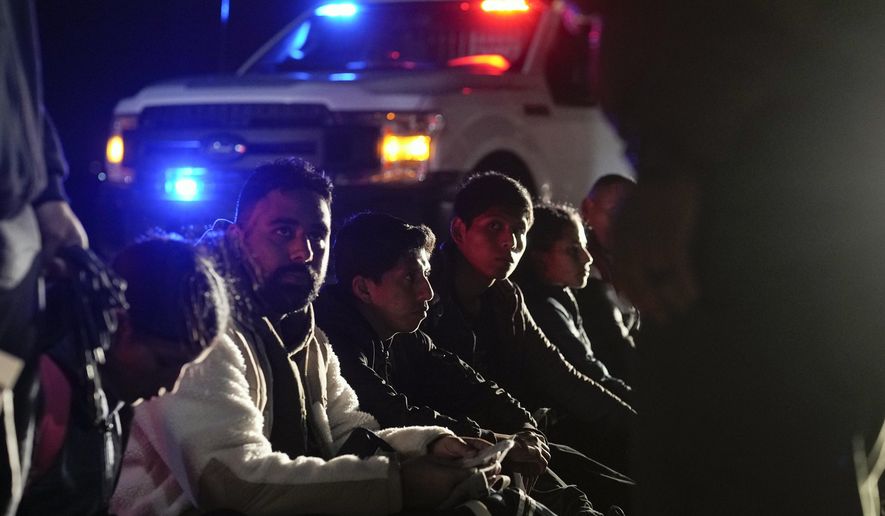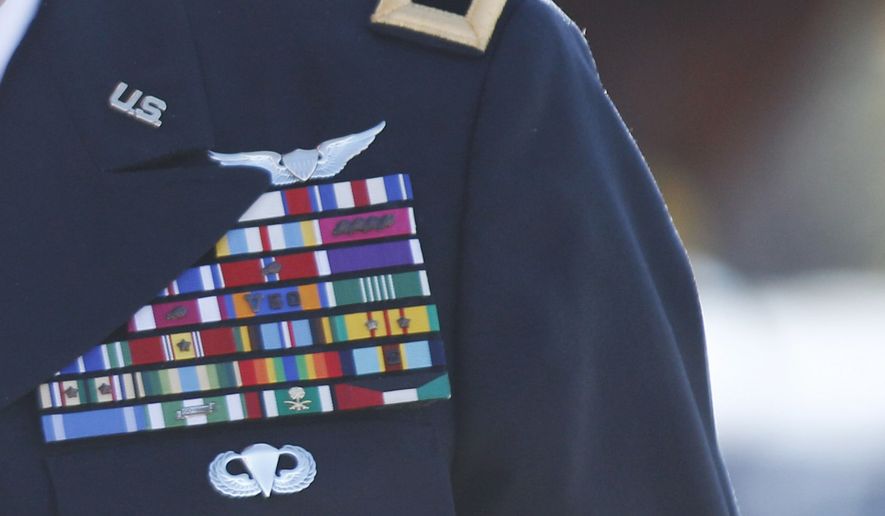Welcome to Threat Status, our weekly roundup of the biggest news inside the Pentagon, on the southern border, and around the world. Click HERE to get Threat Status delivered to your inbox.
Does the U.S. military have too many officers? Some Republican lawmakers say the answer is an unequivocal yes: “Brass bloat” is real.
Key congressional leaders want to start at the top as they pursue cuts to the Pentagon’s massive budget, arguing that the ratio of high-ranking officers to enlisted personnel has ballooned out of control. But others question if trimming the number of generals and admirals is the right approach
Washington Times military correspondent Ben Wolfgang’s deep dive shows that while the roughly 900 generals and admirals on active duty today is far fewer than in past eras, the number compared with total enlisted troops is near a high point in modern military history. In 1965, there were 1,284 generals and flag officers in a total force of nearly 2.7 million. By 1990, the number was 1,054 in a total force of just over 2 million. In 2018, it was 921 to a total force of 1.3 million.
Conservative lawmakers are targeting the upper ranks because they say the commanders in an increasingly woke Pentagon under President Biden are less focused on building an effective fighting force than they are on enforcing COVID-19 vaccinations and promoting diversity and inclusivity in the ranks. We’ll keep you posted on this debate as the new Republican-controlled House ramps up oversight of the administration’s defense policy.
China building for war?

China’s military is engaged in an alarming buildup of forces in “every warfare area,” according to Rear Adm. Michael Studeman, the chief of Navy intelligence, who warns that Beijing’s military modernization is “one of the fastest we’ve seen in human history, [and] it goes well beyond what China needs for its defense.”
Rear Adm. Studeman told the Intelligence and National Security Alliance, a private group, that Beijing is pushing for “effective control” over the disputed South China Sea through patrols and other coercive means, and maritime hegemony near Japan’s Senkaku islands in the East China Sea by using “pressure tactics,” while also stepping up activities near the Philippines.
Both Japan and the Philippines have defense treaties with the United States. They and other regional U.S. allies and partners are scrambling at unprecedented levels to respond.
Washington Times Asia Editor Andrew Salmon homes in on the complex and growing web of defense relationships linking democracies across the Indo-Pacific. A particularly notable development last week saw Indian and Japanese warplanes kicking off 11 days of joint drills over Japan featuring Tokyo’s U.S.-made F15s and India’s Russian-built SU30s. In another first, Australian and British paratroopers this month jumped alongside American and Japanese counterparts in the first exercise to unite airborne troops of all four nations in the skies above Japan.
U.S. military officials are also concerned with growing Chinese and Russian military activities in the Western Hemisphere. Pentagon correspondent Mike Glenn takes stock of U.S. Southern Command Commander Army Gen. Laura Richardson’s recent assertion that “we need to step up our game” in Latin America.
Ukraine war blowback

Russia’s war in Ukraine has emboldened North Korea to test more nuclear weapons. National Security Team Leader Guy Taylor highlights a new report from regional experts who say Moscow’s invasion of Ukraine “seems to have underscored for North Korea the importance of nuclear weapons for its security.”
After a biting standoff among Western powers over how aggressively to arm Ukrainian forces that left Kyiv fuming, the U.S. and Germany now appear ready to approve the transfer of U.S.-made M1 Abrams and German-made Leopard 2 battle tanks to the war-torn country. Officials in both the U.S. and Germany said final decisions had not been made as of Tuesday night, but announcements from the two countries are expected to be coordinated. German Chancellor Olaf Scholz is scheduled to address his country’s parliament Wednesday.
National Security Correspondent Bill Gertz underscores how the Ukraine war and China-Taiwan tensions spurred major overseas interest in a weapons exposition in Las Vegas last week. Poland, Romania, the Philippines, Japan, Taiwan and the Baltic States were among those who sent delegations to the SHOT Show 2023 exposition to buy some of the latest small-arms warfare offerings, machine guns and other related military gear.
On the border

The Department of Homeland Security set a new record for chaos at the southern border in December with more than 250,000 encounters with illegal immigrants, with notably large numbers of Cubans and Nicaraguans jumping the border. The Times’ Stephen Dinan reports that Border Patrol agents also detected 17 illegal immigrants whose identities were on the terrorist watch list, and Customs and Border Protection as a whole set a new record for fentanyl surging into the country.
In our opinion

With the Biden administration recently sending officials from the departments of State, Justice and Homeland Security to engage in a “law enforcement dialogue” with Cuba’s military dictatorship, op-ed writers Jeffrey Scott Shapiro, Marcell Felipe, Orlando Gutierrez and Johnny Lopez de la Cruz sound the alarm about the White House’s potential intentions, arguing that Cuba must remain designated state sponsor of terrorism.
Regular columnist Michael McKenna homes in on the relevance of the newly created House Select Committee on Strategic Competition between the United States and China, asserting the GOP-controlled House must buck the characterization of China as a “competitor” and instead view Beijing as “an adversary.”
Another of our regular columnists, retired CIA officer Daniel N. Hoffman, shines a light on lessons learned from the case of former Defense Intelligence Agency analyst Ana Montes, who was convicted of spying for Cuba in 2002 and was released from a Texas federal prison this month. Mr. Hoffman writes of his own experiences crossing paths with notorious spies Aldrich “Rick” Ames, Walter Kendall Myers and Herman Simm.
Thanks for reading Threat Status. Don’t forget to sign up here and get it delivered to your inbox each week. And if you’ve got questions, Ben Wolfgang and Guy Taylor are here to answer them.
• Guy Taylor can be reached at gtaylor@washingtontimes.com.
• Ben Wolfgang can be reached at bwolfgang@washingtontimes.com.




Please read our comment policy before commenting.